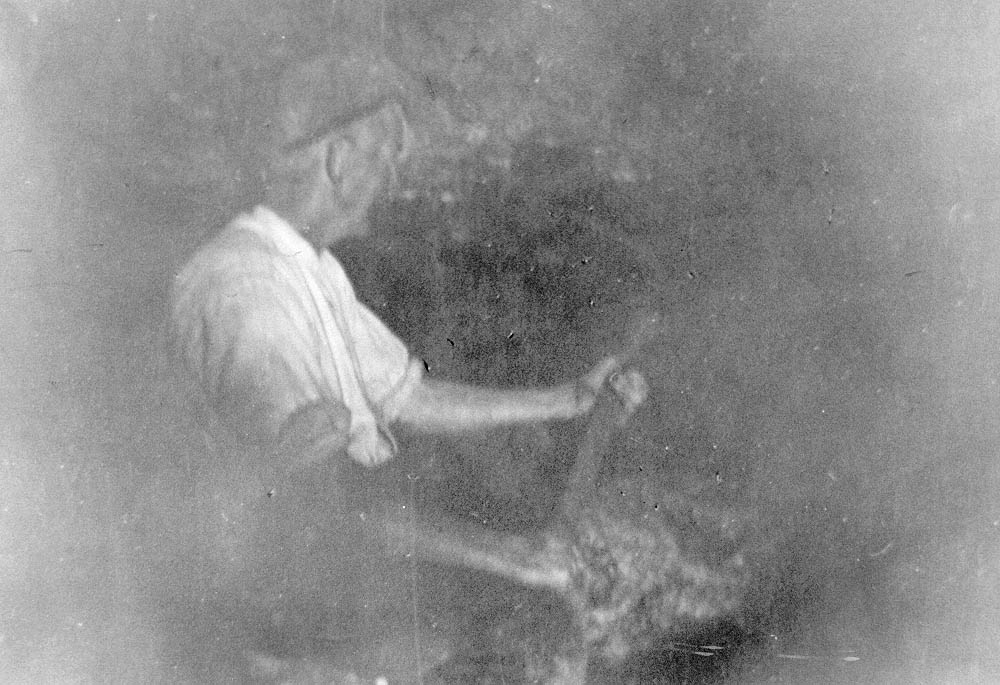
This photograph of James Singleton was taken in the stoneware clay mine at Waterside Pottery, Burton-in-Lonsdale in the late 1930s/early 1940s. Waterside Pottery was located up the driveway on the opposite side of the river from the cricket pitch in Burton.
Stoneware clay was originally dug opencast in the fields outside Waterside Pottery, but this unfortunately ran out around 1905, this forced the potters to open a drift mine to access a 4ft 6 inch seam of stoneware clay that ran into the hillside.
Law required that a qualified miner had to be employed to do this. Ted Tomlinson took this job. Ted had worked at Ingleton Colliery. Ted dug the clay in the mine whilst “Gunner” Jones carted the clay from the mine to the pottery. A railway line was built from the pottery into the mine to make this task easier.
I’m not sure how long Ted and Gunner worked at Waterside Pottery or if they were called up for the First World War and, if they were, whether they came back to the pottery after the war?
Waterside Pottery closed in 1933, but then reopened again in 1937, with Richard Bateson running it in partnership with Harold Parkinson from Hornby Castle.
James Singleton, another former Ingleton Colliery worker, was employed to dig the mine. James had reputedly spent time in the Klondike mining for gold in the 1890s Gold Rush. I’m guessing he can’t have made his fortune in the Klondike, otherwise he might have found more amenable work?
The original clay mine at Waterside had become very unstable, so a new drift mine was opened. After going into the hill for 50 yards the mine collapsed. Fortunately nobody was down at the time. The collapse was turned into an air vent, which was just as well, as when James was working down there one time, the mine collapsed badly near the entrance, sealing James into the mine. James was able to escape through the air vent. The railway line from the old mine was dismantled and installed in the new mine.
The photograph was given to me by Henry Bateson. Thinking about it, if James went out to the Klondike in the 1890s, then it would make him at youngest in his late 50s in 1937 when he went to mine the clay at Waterside Pottery. Does this seem a bit old? The trouble is that the people who told me a lot of the history of the potteries are no longer living, so you can’t go back to them to ask further questions.
